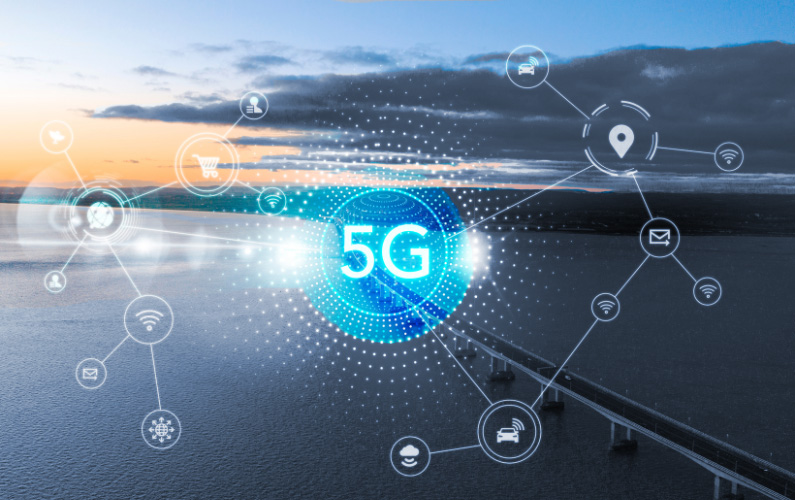Despite being one of the first countries to start implementing 5G commercially in 2019, the UK is now lagging behind other leading markets such as the US and Asia. The reasons for this vary from underinvestment by mobile operators to slowed infrastructure development.
However, the overarching impediment lies in the UK public’s scepticism and the prevailing negative sentiment towards 5G’s purported benefits.
In a nutshell, there’s a significant PR and comms problem. Based on our analysis of 559 articles in UK media, here are our suggestions on how it can be fixed:
1. Analyse 5G conspiracies to counteract them
Public resistance has become a focal point in the UK’s 5G debate, underscored by media coverage of local opposition.
Stories abound of communities mobilising against the erection of 5G infrastructure, such as Swansea villagers contesting a 15-metre mast, the widespread objections to a 5G pole by a school in Lincoln, and Blackpool citizens securing a victory over a mast proposed beside a playground. These incidents highlight the depth of public concern and the critical need for effective communication strategies to address misinformation and build public trust in 5G technology.
Granular insights from media analytics can delve into the specifics of public apprehension, revealing that health and safety fears dominate the conversation around 5G opposition in the UK.
Such detailed analysis can expose pervasive myths—like unfounded claims linking 5G to cancer, COVID-19, and a weakened immune system—which have been fuelling resistance since 2020, when we last analysed the issue. Additionally, environmental concerns form a significant part of the discourse, with detractors citing unproven dangers to wildlife, including birds and insects. Understanding these nuanced concerns through media analytics is crucial for telecoms to craft targeted, fact-based communication strategies that can alleviate fears and correct misinformation.
In addition, our analysis of 11.1k Tweets posted by UK users since the beginning of the year reveals a significant focus on health-related anxieties within the Twitter debate on 5G.
The prevalent use of ‘radiation’ in the Twitter discourse about 5G showcases a deep-seated misconception equating all forms of radiation with harmful effects, a notion fueled by historical fears and misinformation. Companies should actively demystify the term by educating the public on the differences between non-ionising radiation, used in 5G technology, and ionising radiation, which can be harmful. This approach, combined with transparent communication about international safety standards and real-world data on radiofrequency emissions, could mitigate fears and correct misunderstandings surrounding 5G’s health implications.
2. Revamp your PR strategy to avoid overhype
Surveys indicate a disconnect between the marketing of 5G and the actual user experience in the UK, with a significant portion of mobile users believing that the advantages of 5G have been exaggerated. For instance, recent research highlighted that while companies tout substantial upgrades, actual improvements in speed and reliability have not been widely felt by consumers, with less than half reporting noticeable enhancements after upgrading to 5G-capable devices.
Our analysis found that this sense of overhype is compounded by telecom giants like Vodafone, EE, Three, and Virgin Media O2, who have been influential in the media narrative due to extensive reporting on their plans to provide 5G coverage, including in the London Underground.
These companies’ promises of “revolutionising” and offering “ultrafast mobile services” to commuters significantly raise expectations. And the overhype is not limited to telecoms; government officials like John Whittingdale, who emerged as the most influential spokesperson in the debate, also made bold claims about the transformative potential of 5G.
As the over-promotion of 5G’s capabilities contributes to consumer scepticism and slower adoption rates, it’s imperative for PR and communications teams to recalibrate their strategies. This involves promoting a more realistic view of the technology’s current capabilities and its incremental rollout, thereby aligning public expectations with the actual pace and impact of 5G development.
3. Identify narrative gaps to promote 5G’s tangible benefits
To effectively communicate the value of 5G, companies must shift from generic hype to specific, tangible benefits that resonate with consumers’ daily lives and societal needs. For instance, Vodafone‘s recent projection of how 5G could save the NHS £1.25bn annually by enhancing smart health devices and enabling data-driven healthcare showcases a direct, beneficial impact.
However, our analysis found that current PR efforts like Vodafone‘s have not gained significant media traction due to a saturated narrative focused on the tech’s promise rather than its real-world implications.
Against this backdrop, companies should leverage advanced media analytics, particularly white space mapping, to find and exploit narrative gaps in the media landscape. Apart from healthcare, such narratives can include areas like remote education, where 5G’s low latency could elevate virtual learning with real-time interaction, akin to traditional classrooms.
Another underreported area is 5G’s role in infrastructure, where it can manage traffic flow, reduce congestion, and support environmental monitoring. Additionally, in the entertainment sector, 5G can transform experiences by streaming high-definition content at sporting events or concerts without lag, creating immersive experiences. Addressing these less-explored narratives can illustrate 5G’s practical value in everyday scenarios, steering the conversation towards visible and immediate benefits.
